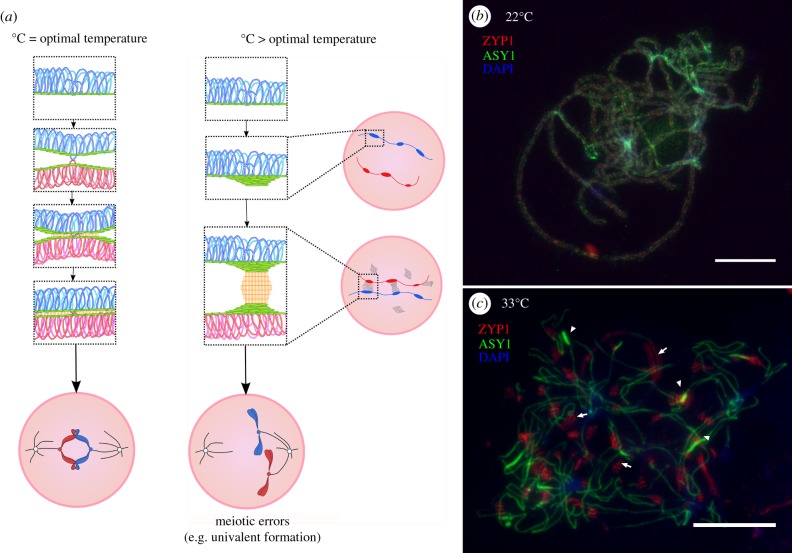Figure 2.
A model for meiotic failure at high temperature. (a) Meiotic axis formation and synapsis are compromised at temperatures exceeding the physiological optimum, leading to aggregation of axis proteins and SC polycomplex formation. Perturbation of axis and SC formation leads to downstream effects such as altered crossover frequency and localization or crossover failure leading to univalent formation. (b,c) Prophase I cells from tetraploid Arabidopsis arenosa grown at 22°C (optimal) and 33°C (>optimal) temperatures and stained for the axis-associated protein ASY1 (green), the SC transverse filament protein ZYP1 (red) and DNA (stained with DAPI, blue). (b) At 22°C a linear axis is formed and the cell undergoes full synapsis via the formation of a continuous SC. (c) At 33°C discontinuous ASY1 staining is observed along with axis-associated ASY1 aggregate formation (white arrowheads) and ZYP1 polycomplexes (white arrows) form in regions that are both linked and unlinked to the axis. Scale bars, 10 µm.

